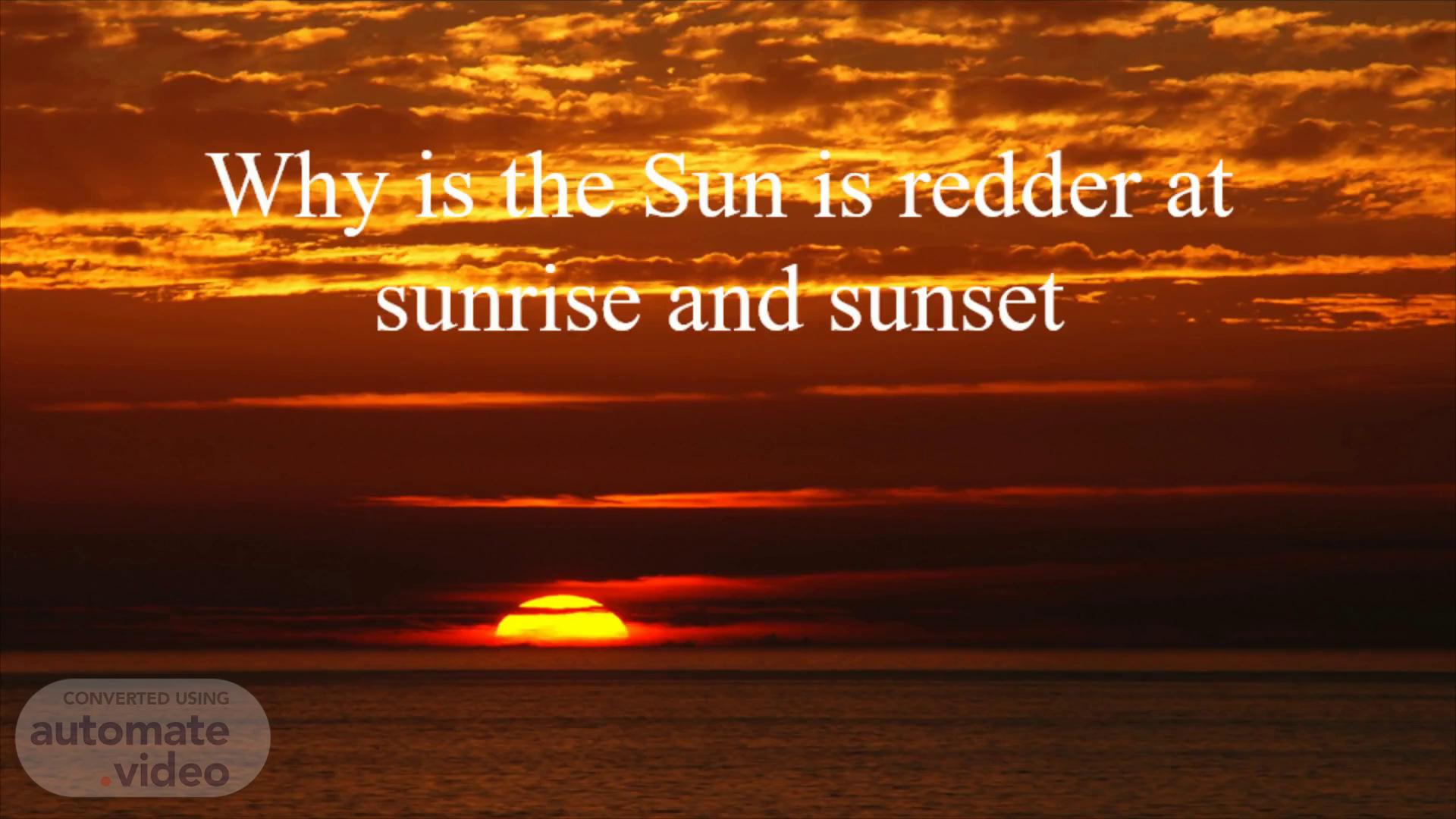
Why is the Sun is redder at sunrise and sunset
Scene 1 (0s)
Why is the Sun is redder at sunrise and sunset. Aim-To discover the reason behind this everyday phenomena Related questions – why is the sky blue and the clouds white? – why does the sun look yellow to the naked eye?.
Scene 2 (21s)
Theory/ Background Research. Topics Light Light through a Prism(Dispersion of Light) Scattering of Light Relationship between wavelength and frequency of different colors.
Scene 3 (42s)
Light. Light(visible light) is a type of electromagnetic radiation within the section of the electromagnetic spectrum observed by the human eye. White light is the visible light given off by the sun. It is the summation of all visible colors..
Scene 4 (58s)
Light through a prism. When white light is passed through a glass prism it splits into its spectrum of colours The process of white light splitting into its constituent colours is termed as dispersion. Violet bends the most having the shortest wavelength Red bends the least having the longest wavelength ROYGBIV.
Scene 5 (1m 38s)
Scattering of Light. When white light from t he sun enters the earth's atmosphere, the light gets scattered Longer wavelengths have low frequency, they are straighter and the chances of colliding with the particle are less, so the chances of scattering are less. Shorter wavelengths and high frequency scatter more ..
Scene 6 (2m 19s)
Scattering of Light contd…. Wavelength of visible light ranges from 400nm to 700nm Air molecules < 0.4nm Water droplets & Dust particles >1000nm Scattering of light by water droplets and dust particles —- scatters all the colors equally in all directions—most of the light passes through, only a small percentage is scattered Scattering of light by air molecules —- scatters every color differently— shorter wavelengths are scattered the most. This is known as preferential scattering..
Scene 7 (3m 11s)
Hypothesis. Hypothesis - 1 Due to the scattering of light, unscattered orange-red color reaches the atmosphere that we see. The sun is red in the morning and at night The distance of the sun at certain periods.
Scene 8 (3m 53s)
Experiment. Add water to a clear glass Add little amount of milk to it Take the glass to a dark room with no lights Shine a flashlight on the top of the glass Observe the color inside the glass.
Scene 9 (4m 5s)
Analysis. We can see in this picture that as expected, because of the scattering of blue light, an orange like dark color is seen at the bottom, which proves our hypothesis ..
Scene 10 (4m 25s)
Related Questions. Why is the Sky blue but the clouds white? Clouds are made of water droplets. The atmosphere is made of air molecules. Why does the sun appear yellow to the naked eye? Earth's atmosphere scatters blue light more efficiently than red light. The slight deficit in blue light means the eye perceives the colour of the Sun as yellow Why is space black?.
Scene 11 (5m 24s)
Conclusio n. Blue is scattered more than other colors because it travels as shorter, smaller waves . At sunset , light has greater layers of atmosphere to travel through. The shorter wavelength, blue light is scattered first A s the sunlight passes over a greater distance, we see the longer wavelengths yellow and red light..